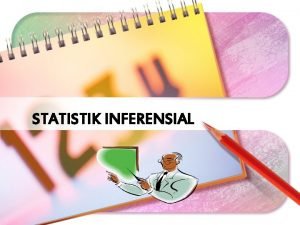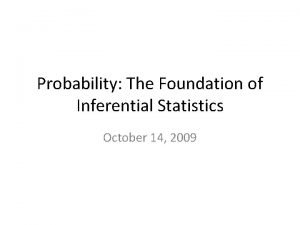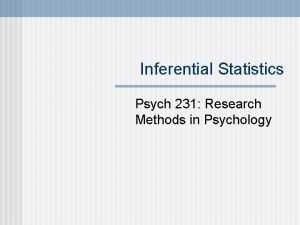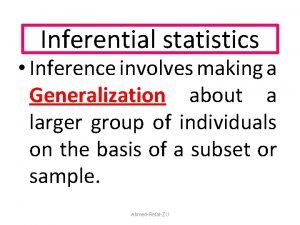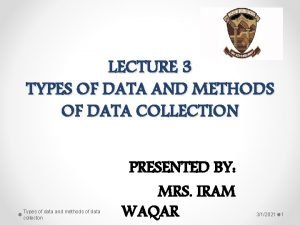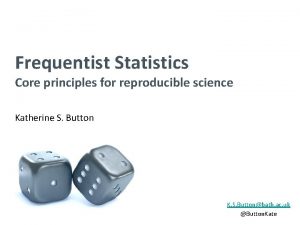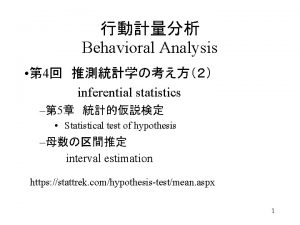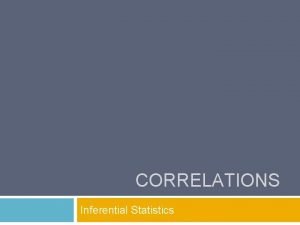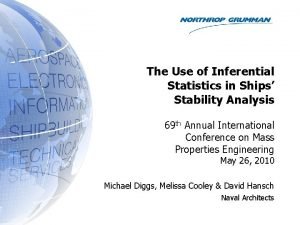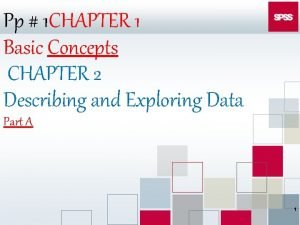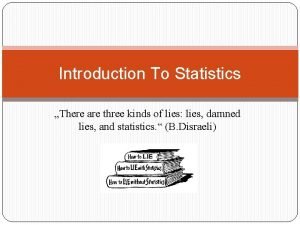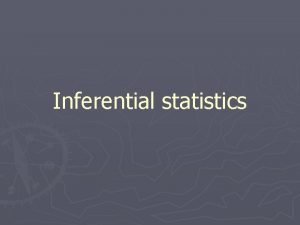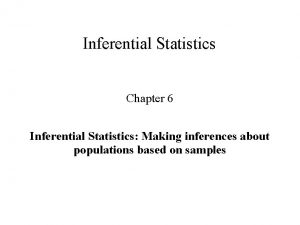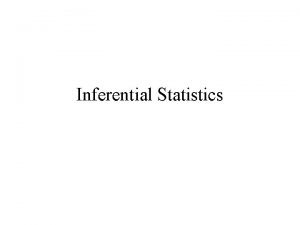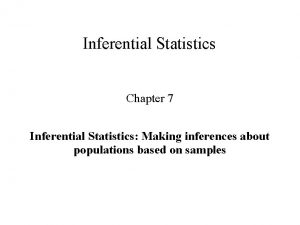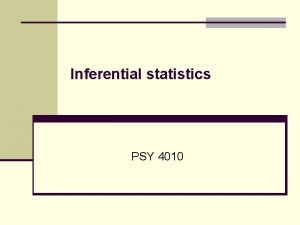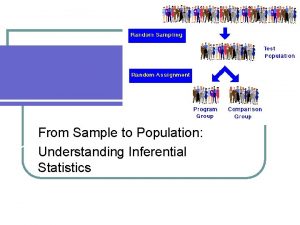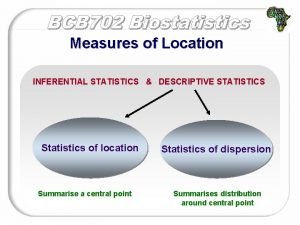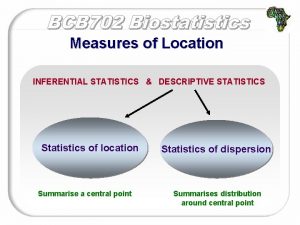Seminar 4 Inferential Statistics Choosing a test Test













- Slides: 13

Seminar 4 Inferential Statistics

Choosing a test Test adopted depends on a number of factors: ◦ ◦ ◦ Design of study (e. g. within or between-participants? ) Number of variables The nature of the data (levels of measurement) Sample characteristics (e. g. normally distributed? ) Inferences to be made (e. g. investigating a relationship or looking for differences? ) Main distinction = parametric or non-parametric

Parametric tests Use if: 1. Level of measurement on DV is scale 2. The data is normally distributed 3. Homogeneity of variance is met

Parametric tests Many different types exist Some common examples ◦ ◦ Independent samples t-tests Paired samples t-tests One-way between groups ANOVA Repeated measures ANOVA

Independent Samples t-test Use if you are comparing two unrelated groups ◦ E. g. comparing males and females in anxiety levels Uses a non-repeated/between-groups design

Paired Samples t-test Use if you are comparing two related groups ◦ E. g. testing people’s change in attitudes over time (test at time 1 and again at time 2) This uses a repeated/within-participants design

ANOVAs If you have more than two experimental groups or conditions (with scale data), you will need to use an ANOVA ◦ Analysis of Variance (also compares means) If design is within-participants use a repeated measures ANOVA Between-groups use a between groups ANOVA ◦ e. g. testing three occupation groups on their levels of job satisfaction If differences with more variables involved consider the two way ANOVAs and MANOVAs.

Correlations Used when you want to see if there is a relationship between two variables Select Pearson’s r for normally distributed scale variables Select Spearman’s rho or Kendall’s Tau if data is ordinal or not normally distributed

Regression Can you predict one variable from others Linear: Lets you look at relationships between TWO variables at a time Multiple: Lets you look at relationships between three or more variables at a time

Non-parametric tests Like parametric tests, depends on whether your groups or conditions are related or unrelated (between- or within-participants) Also depends on the type of data obtained When data are unrelated and nominal use the chi-square test ◦ E. g. looking at how many men or women work

When data is ordinal or interval Tests for two related samples ◦ The Wilcoxon (T) signed ranks test ◦ (equivalent to dependent t-test) Tests for two unrelated samples ◦ The Mann-Whitney (U) test ◦ (equivalent to independent t-test)

When data is ordinal or interval Non-parametric equivalent to one-way ANOVA is ◦ Kruskal-Wallis For a repeated ANOVA, equivalent is ◦ Friedman’s test

Running and reporting For more detail in terms of running the tests and reporting each one please see the zipped folder on moodle which goes through it step by step.
 Apa itu one sample t test
Apa itu one sample t test Empirical method probability
Empirical method probability Inferential tests psychology
Inferential tests psychology Inferential statistics table
Inferential statistics table Descriptive hypothesis
Descriptive hypothesis Rare event rule for inferential statistics
Rare event rule for inferential statistics Data collecton
Data collecton Inferential statistics
Inferential statistics Inferential statistics 意味
Inferential statistics 意味 Inferential statistics correlation
Inferential statistics correlation Advantages of inferential statistics
Advantages of inferential statistics Characteristics of inferential statistics
Characteristics of inferential statistics Frequency distribution ap psychology
Frequency distribution ap psychology Dichotomic and polynomic
Dichotomic and polynomic
